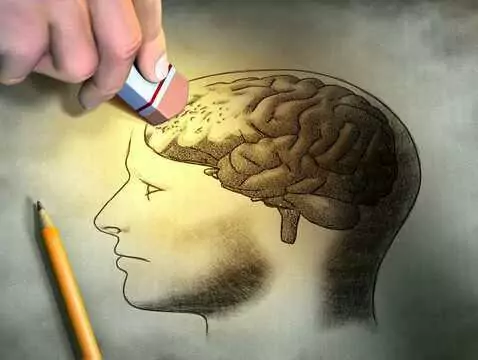Seasonal affective disorder is a flagship psychiatric disorder in which the involvement of biological rhythms is emphasised. For the most part, SZA takes the form of bipolar affective disorder type II.
Internal rhythms
Many processes in the human body run rhythmically. For example, at 3 p.m., motor skills and sensitivity to stimuli are at their highest; at 4 p.m., heart rate, blood pressure and body temperature are at their highest; at 6 p.m., the kidneys produce the most urine; at 2 a.m., the serum concentration of the growth hormone somatotropin is at its maximum; at 6 a.m., the serum concentration of the adrenal hormone cortisol increases, while that of the pineal hormone melatonin decreases and the pancreatic islets produce the smallest amount of insulin during the day.
Understanding the role that circadian rhythms play in people's lives can help treat disorders in which they become desynchronised.
The biological clock
The day-night cycle of human activity, also known as the circadian rhythm or biological clock, is an innate function of the body. It is controlled by a self-perpetuating genetic timer. Its operation was best understood in the fruit fly; later studies showed that a similar genetic mechanism regulates circadian rhythms throughout the animal kingdom.
The operation of the biological clock is based on the activity of four genes called per ( period), tim ( timeless), cycle and clock. The proteins encoded by these genes are produced cyclically and are in feedback to each other.
It has been shown that the PER and TIM genes (the gene names in humans are written in capital letters) are also active in the nerve cells of the nucleus accumbens in the hypothalamus of the human brain; this structure is the central transmitter of biological rhythms.
The genetic mechanism of the biological clock appears to operate in different cells of the body. A somewhat drastic example is the cyclic production of proteins encoded by biological clock genes in fruit fly cells after decapitation.
In humans, the length of the circadian rhythm has been determined experimentally. It is 24 hours and 18 minutes. As experiments have shown, this period is independent of the experimentally altered length of the day. In order to harmonise the body's sleep-wake rhythm with the day-night cycle found in nature, the biological clock's hands are synchronised by natural sunlight.
An inconvenient consequence of the synchronisation of the circadian rhythm with the day-night rhythm is the phenomenon known as jet lag (sometimes translated as jet pilot syndrome). It is a dysfunction of the body caused by a rapid change of time zone, usually after a flight. Symptoms include sleepiness and lack of appetite during the day and lack of night sleep. The physiological resynchronisation of the biological rhythm can last for several days.
Disruption of the biological clock takes place in many psychiatric disorders.
Affective disorders
The affective disorders are a large and heterogeneous group of conditions. They include disorders whose elements are symptoms of a depressive, manic, hypomanic or mixed episode. These disorders also vary in severity and duration. One recently described affective disorder is seasonal affective disorder (SZA).
Seasonal affective disorder is a flagship psychiatric entity in which the involvement of biological rhythms is emphasised. In the majority of cases, SZA takes the form of bipolar affective disorder type II.
The following criteria are useful in diagnosing SZA (according to ICD 10):
- three or more episodes of mood disorders with onset during a specific time of year in three or more consecutive years, the affective disorders can be either hypomanic, manic or depressive;
- cessation of symptoms occurs at a specific time of the year;
- in the total illness picture, the number of seasonal episodes exceeds the number of non-seasonal episodes.
According to DS IV, two consecutive seasons with relapses are sufficient for the diagnosis of SZA.
Among the depressive symptoms in the course of SZA, increased sleepiness, lack of energy, fatigue, increased appetite for carbohydrates and weight gain are characteristic.
The prevalence of SZA in the population is up to 10 per cent, while the prevalence in the depressed population is around 20 per cent. SZA probably has a hereditary background. Women are three times more likely to be affected; the disorder is rare after the age of 55. It is interesting to note that the prevalence of SZA increases with latitude. This appears to be related to the decreasing number of days of sunshine per year towards the Earth's poles, and the shortening of the length of the bright day (or photoperiod).
Three main pathomechanisms of SZA are considered:
- Mechanism 1 - a disorder of the retinal photoreceptors involving a deficit in their function - the so-called photon counting hypothesis.
- Mechanism 2 - neuroendocrine disorder. The basic assumption of this hypothesis is that melatonin is the hormone responsible for the circadian rhythm. However, this assumption is controversial.
- Mechanism 3 - disruption of the endogenous phase of the sleep-wake rhythm. It is now considered that the hypothesis of a delayed phase of the biological clock is the most plausible in the pathogenesis of SZA.
From the point of view of brain neurophysiology, it seems that disturbances concerning the neurotransmitter serotonin are responsible for the occurrence of SZA.
Seasonal affective disorder is resistant to treatment with ordinary antidepressants ! In certain cases, selective transporter inhibitors for serotonin can be effective. The form of treatment of choice for SZA is visible light therapy.
Another affective disorder in which psychiatry sees links to dysfunction of the biological clock is short-term affective disorder. This entity is diagnosed when depressive episodes last for a short period of time, usually two to three days (but no longer than two weeks), and these episodes occur at least once a month over the course of a year. The disorder has been shown to occur more frequently in late autumn and early winter.
In depressive disorders without seasonal occurrence, diurnal mood swings are observed. The so-called somatic syndrome in depressive disorders includes a stronger lowering of mood in the morning.









